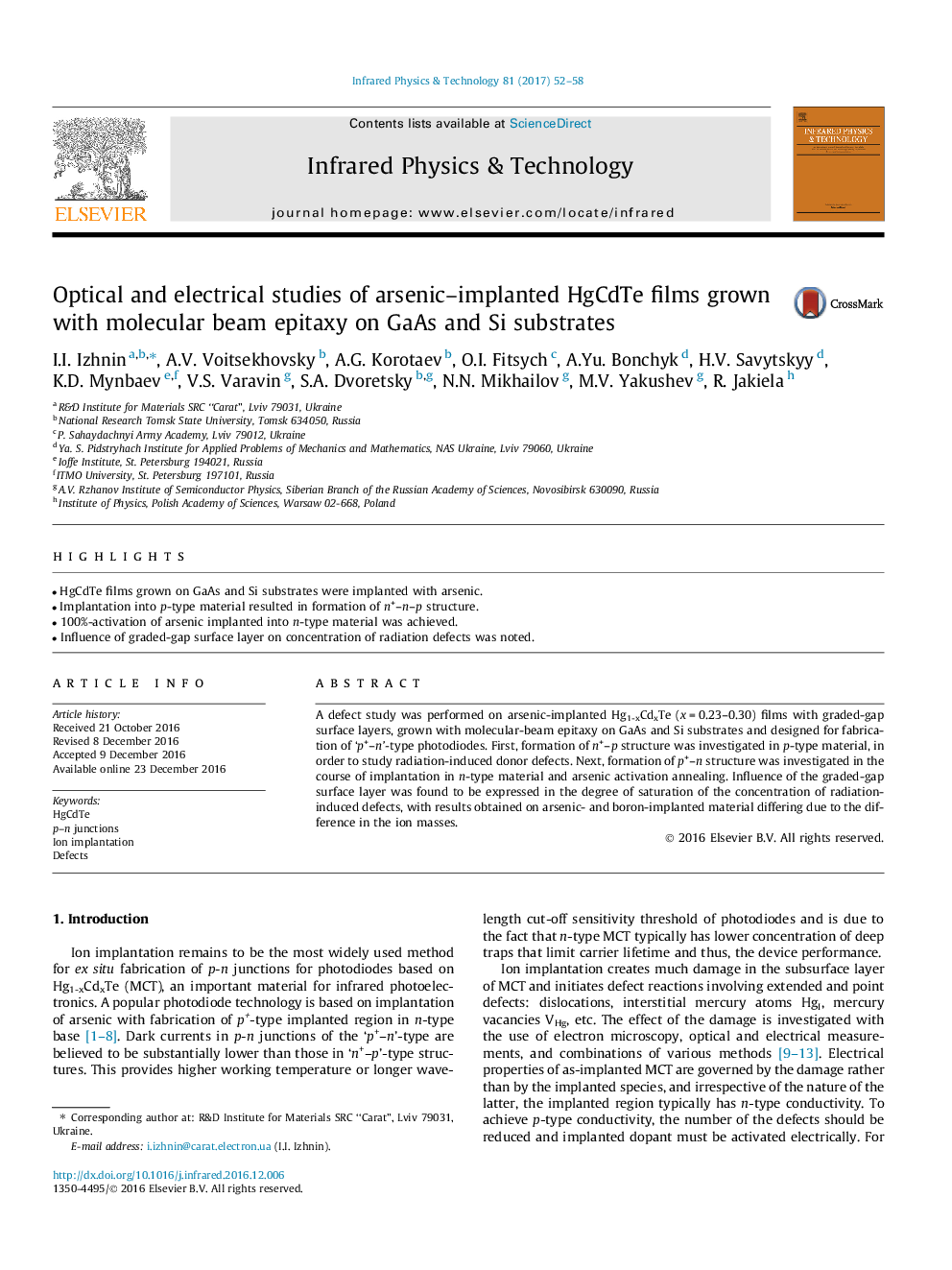| Article ID | Journal | Published Year | Pages | File Type |
|---|---|---|---|---|
| 5488674 | Infrared Physics & Technology | 2017 | 7 Pages |
Abstract
A defect study was performed on arsenic-implanted Hg1-xCdxTe (x = 0.23-0.30) films with graded-gap surface layers, grown with molecular-beam epitaxy on GaAs and Si substrates and designed for fabrication of 'p+-n'-type photodiodes. First, formation of n+-p structure was investigated in p-type material, in order to study radiation-induced donor defects. Next, formation of p+-n structure was investigated in the course of implantation in n-type material and arsenic activation annealing. Influence of the graded-gap surface layer was found to be expressed in the degree of saturation of the concentration of radiation-induced defects, with results obtained on arsenic- and boron-implanted material differing due to the difference in the ion masses.
Related Topics
Physical Sciences and Engineering
Physics and Astronomy
Atomic and Molecular Physics, and Optics
Authors
I.I. Izhnin, A.V. Voitsekhovsky, A.G. Korotaev, O.I. Fitsych, A.Yu. Bonchyk, H.V. Savytskyy, K.D. Mynbaev, V.S. Varavin, S.A. Dvoretsky, N.N. Mikhailov, M.V. Yakushev, R. Jakiela,
